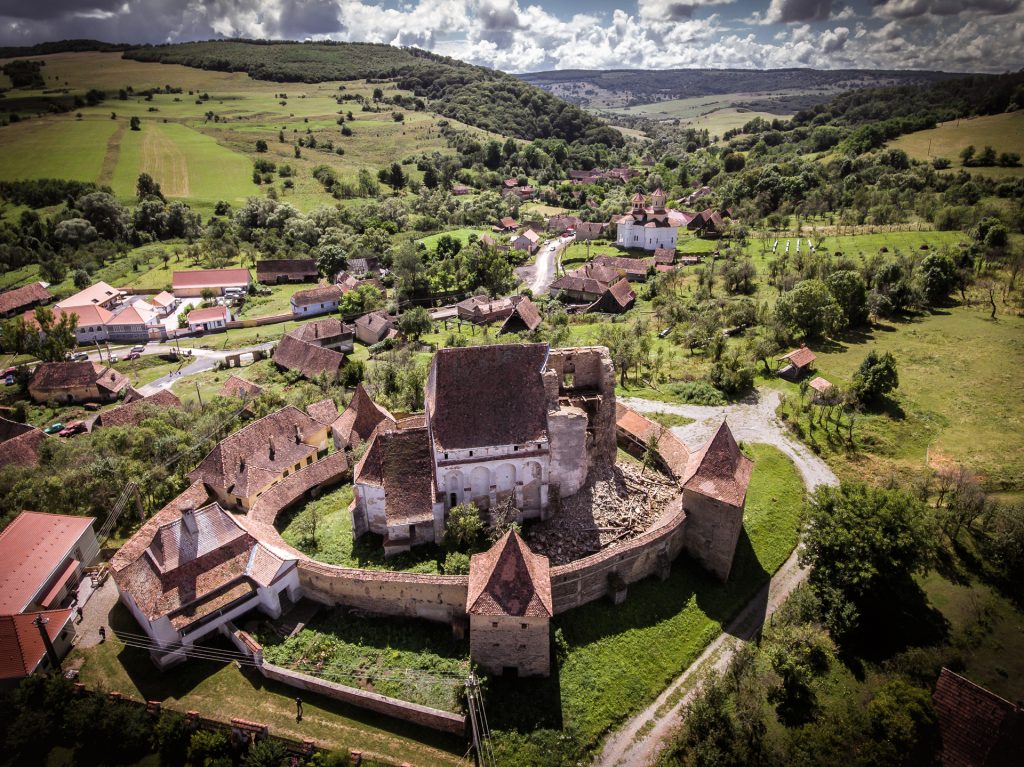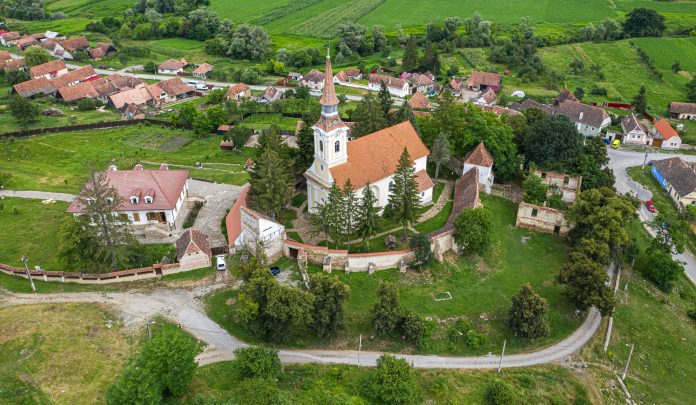Transylvania, ‘a real region turned into a myth’ has been written about from afar, experienced between the scythes and hops, and now can be seen from above in a series of stunning aerial photos.
National Geographic Romania on Monday offered its readers a bird’s-eye view of the region in northwest Romania in a photo essay it says will help visitors not only discover its people and customs, but also the legacy of past centuries.
The project focuses on the Saxon fortified churches which are in the heart of Transylvania and “messengers of the long gone times, true stone testimonies of a past that should not be forgotten,” the publication said on its Facebook page.
Equipped with a DJU Phantom 4, photographer Calin Stan traveled through the Saxon villages this summer and took photos of the settlements with a drone.
“The Fortified churches of Transylvania” wasn’t an easy undertaking, National Geographic explained.
“Aerial photography needs special conditions_ it mustn’t rain or snow and the wind can’t gust more than 10 meters a second; you can’t have any birds around, who could literally attack the drone.”
So far, Calin Stan has taken shots of nine fortified churches in Criț, Viscri, Saschiz, Cloasterf, Meșendorf, Alma Vii, Malancrav, Roades and Harman.

The best known site is Viscri, which was put on the map by Britain’s Prince Charles and receives thousands of visitors every year.
Charles visits Transylvania every year and has been involved in preserving the heritage and customs of Transylvania for almost 20 years.
Just 10 kilometers down the road from Viscri is the village of Crit which was first attested in 1322.
Crit, which has a population of less than 700, is even more charming than Viscri visitors say.
It has been the fortunate beneficiary of the Michael Schmidt Foundation which restored the Baroque organ and former parochial house and launched the Hafenland annual festival.
Native son Michael Schmidt left the village when he was a teenager, went into business and is now the largest BMW dealer in Central and Eastern Europe and only Rolls Royce dealer.
Under the auspices of the foundation, the former parochial house has been transformed into “Casa Kraus” a boutique hotel named after one of the former parish priests with a superb view over the valley which is famous for its oats.
The Haferland Festival celebrates traditions in the local Saxon villages which have seen a revival in recent years.
During communism, more than 200,000 Saxons emigrated to Germany and others were forcibly relocated from the villages to towns under Nicolae Ceausescu’s plans to urbanize the population.
The Transylvanian Saxons (Siebenbürger Sachsen in German) first arrived in the 12thcentury from areas that today are part of Luxembourg, France and Belgium. Hungary’s King Geza II invited them to develop the local economy and to protect the outlying regions of the Hungarian Kingdom from invaders.
The Saxons gained a reputation for being resourceful and skilled craftspeople and farmers who had good relations with the local population and have thrived for centuries.
The largest community of Saxons in Romania is in Mălâncrav which was first attested in 1305 and organized itself around the church About half the local population of 150 are Saxons.
National Geographic global edition recently published a list of “amazing places to inspire future journeys and remind us why we love to travel,” and named Transylvania as one of them.
The region features with Florida’s Space Coast; the England Coast Path; and the Hungarian plains in the family category.
It’s a mix of “pastoral, old-Europe feel,” next to “Cosmopolitan Cluj” where visitors can explore “rural Transylvania’s wildflower meadows, storybook castles, and cobbled-lane villages.”




















